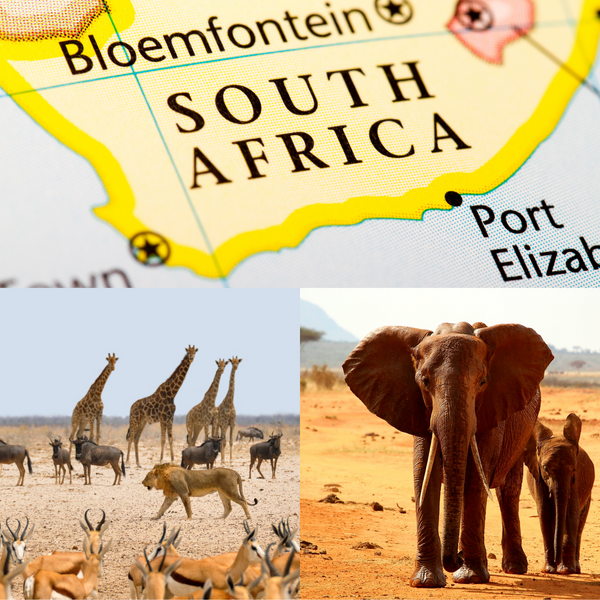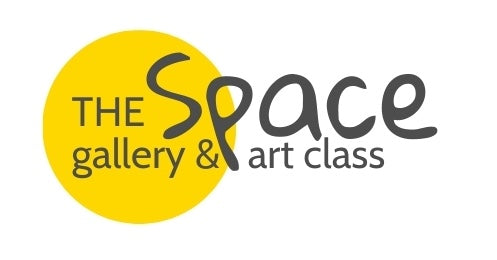
From Wildlife to Art Conservation Pieces
Share
With the Art of Africa exhibition in September/October at THE SPACE gallery, nothing like diving into the heart of the exhibiting artists to see and understand where their love and inspiration are coming from.

The eye never forgets what the heart has seen! - Unknown
Through the eyes of Australian wildlife photographer Tanya Stollznow, let's discover the Kruger National Park, South Africa.
To honour her love of wildlife and her "Africa on White high key image" collection, we have done some research about the Kruger National Park with the express purpose of promoting awareness and conservation our natural world.
In 2010 Tanya and her husband Zachary visited the Kruger National Park for the first time to spend a few months filming wildlife. It was the start of an ongoing love affair with Africa and the wildlife of the Kruger.

South Africa
South Africa, the southernmost country on the African continent, renowned for its varied topography, marked by several distinct ecosystems, great natural beauty, and cultural diversity.
South Africa is home to the inland safari destination Kruger National Park populated by big game.
The Western Cape offers beaches, lush winelands around Stellenbosch and Paarl, craggy cliffs at the Cape of Good Hope, forest and lagoons along the Garden Route, and the city of Cape Town, beneath flat-topped Table Mountain.
South Africa has three capital cities: executive Pretoria, judicial Bloemfontein and legislative Cape Town.
With over 60 million people, it is the world's 23rd-most populous nation and covers an area of 1,221,037 square kilometres (471,445 square miles).
Facts about the Kruger National Park
- In 1898, The Kruger National Park was first proclaimed as the Sabie Game Reserve by the then President of the Transvaal Republic, Paul Kruger. He initiated a drive to create a ‘no-hunting’ zone to protect the wild animals of the Lowveld
- In 1926, the park was proclaimed a national park
- Kruger National Park is the oldest Park in Africa (123 years old)
- The park is one of South Africa’s most popular tourist destinations
- The Park is wedged between the provinces of Limpopo and Mpumalanga in the north-eastern region of South Africa, with Mozambique on its eastern border and Zimbabwe on its northern border.
- The Kruger National Park is one of the largest game reserves in Africa, covering an area of just under 20 000 square kilometres (7 500 sq/miles)
- The Kruger National Park is 350 kilometres long and 60 kilometres wide.
- The Kruger National Park has over 2 000 plant species, including over 330 plant species. The Park is home to the Big 5 (lion, rhino, buffalo, elephant and leopard) and 500 bird species.
Some of the animals described by Tanya Stollznow.
ELEPHANT
African Elephant - Open Edition
The African elephant is the largest animal walking the Earth and can be found in 37 countries in Sub-Saharan Africa; however, they are already considered extinct in Burundi, Gambia and Mauritania. Because elephants have adapted to life across many of Africa’s diverse ecosystems they play a vital role in maintaining fragile ecological systems. Poaching and urban sprawl pose a massive threat to the survival of African elephants. They are classified as a vulnerable species.
This African elephant portrait is a reminder to us all of the majesty of our natural world and the need to conserve it for future generations.
LION

African Lion Cub - Open Edition
A hundred years ago over 200,000 lions roamed Africa and Asia. Today, that number is about 20,000. Lion populations now face a risk of extinction from numerous threats, including habitat loss due to encroachment by humans.
Lions are currently listed as vulnerable on the International Union for the Conservation of Nature Red List of Threatened Species. In West Africa, the species is now classified as Critically Endangered.
This image of a beautiful young lion cub makes us reflect on how we as individuals can assist in the conservation of wildlife and their habitats.
RHINO
 Rhinoceros and Calf - Open Edition
Rhinoceros and Calf - Open Edition
Rhinoceros are a critically endangered species with less than 27,000 rhinos living in the wild today. Very few rhinos survive outside national parks and reserves due to persistent poaching and habitat loss over many decades. Due to community engagement campaigns, rhino game guards, robust monitoring efforts and translocation projects rhino populations are increasing in some areas.
This image was taken with the express intent to create awareness of this beautiful African species and how critical it is for the community to get behind programs to protect and conserve rhinos and their habitats.
CHEETAH

Cheetah - Open Edition
The cheetah is the world's fastest land animal and Africa's most endangered big cat. Sadly, this beautiful animal is threatened by loss of habitat and prey, as well as conflict with humans.
This close-up image evokes a sense of the beauty and majesty of these African native cats and a reminder to us all to protect these animals.
BUFFALO
 Cape Buffalo and Oxpecker - Open Edition
Cape Buffalo and Oxpecker - Open Edition
The Cape buffalo is the largest and most common of the savanna buffaloes. In the Serengeti, in the rainy season, they can often be found in herds in the thousands.
Cape Buffalo are not endangered, but habitat loss and hunting pressures threaten them, as well as the introduction of non-native species, which can carry disease.
The symbiotic association the Cape buffalo has with the oxpecker is portrayed in this image with the oxpecker picking off parasites that the buffalo may be infested with.
This image is a reminder that all wildlife in an ecosystem depends on each other. If one species is vulnerable then this affects the rest of the ecosystem.
Be the First To Hear About Our Upcoming Exhibitions
THE SPACE gallery is a contemporary art gallery and workshop in Rosebery. We enjoy sharing local and international artists with the community and would love to see you at our next exhibition. Sign up for our newsletter or get in touch to find out more about our upcoming art shows in Sydney.
